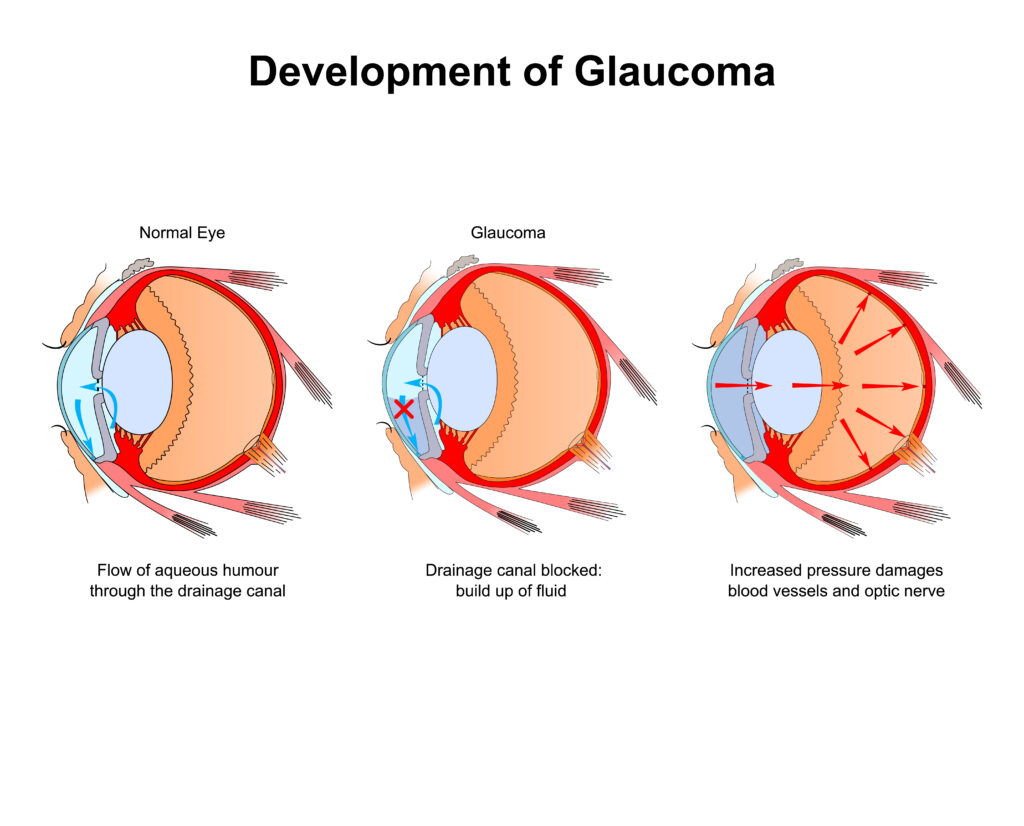Does Glaucoma Require Surgery?
Have you been diagnosed with glaucoma? Do you want to learn more about treatment options to preserve your sight?
When you have glaucoma, seeking treatment is essential. Glaucoma is a serious eye condition that can result in irreversible vision loss if left untreated.
Treatments, including eye drops, laser treatments, and surgeries, can slow down vision loss and save your sight. However, the specific treatment you need depends on your individual eye health and how far your glaucoma has progressed.
Keep reading to learn more about whether glaucoma requires surgery.
What is Glaucoma?

Glaucoma is optic nerve damage that occurs when fluid builds up in the eye and raises intraocular pressure. Without treatment, it can permanently affect your vision.
Glaucoma is the second most common cause of blindness worldwide. Usually, glaucoma forms when fluid accumulates at the front of the eye.
This increased pressure, known as intraocular pressure, slowly damages the optic nerve. Glaucoma often impacts both eyes.
While there isn’t a cure, treatment for glaucoma can keep the condition from worsening and prevent further vision loss.
What are the Types of Glaucoma?
There are four main types of glaucoma, including:
Open-Angle Glaucoma
Open-angle glaucoma is the most common type of glaucoma. Around 90% of Americans with this eye condition have open-angle glaucoma.
It occurs when the eye’s drainage canals don’t drain properly, leading to a rise in intraocular pressure that eventually causes damage to the optic nerve. It’s common for open-angle glaucoma to last for many years before any noticeable symptoms arise.
Angle-Closure Glaucoma
Angle-closure glaucoma is a much rarer type of glaucoma that can have a more sudden onset. It occurs when the angle between the iris and cornea is too narrow, blocking drainage canals.
This causes fluid to build up in the eye and leads to increased pressure. Angle-closure glaucoma is much more likely to have symptoms, such as headaches and eye pain.
If you think you may have angle-closure glaucoma, you should seek immediate medical assistance, as vision loss can be rapid and permanent if not promptly treated.
Normal-Tension Glaucoma
While glaucoma is usually caused by increased pressure on the optic nerve, it’s possible to have optic nerve damage with normal eye pressure. The underlying causes of normal-tension glaucoma still aren’t entirely known.
It’s more common to have normal-tension glaucoma if you are of African or Asian descent.
Congenital Glaucoma
Glaucoma typically impacts older adults, but babies that are born without adequately formed drainage canals in the eye can also develop glaucoma. Congenital glaucoma is also known as childhood or pediatric glaucoma.
It’s important to take infants and children to the eye doctor regularly. During these visits, their eye doctor will look for symptoms of congenital glaucoma and other eye issues.
What are the Symptoms of Glaucoma?

Glaucoma is often challenging to detect, with few warning signs before damage occurs. The most common type of glaucoma, open-angle, usually doesn’t have any symptoms at first.
This is why it is crucial to have regular eye exams, especially if you are over the age of 65. Your eye doctor can screen for signs of glaucoma and begin treatment before significant damage can occur.
Once vision damage has occurred, it cannot be reversed. While open-angle glaucoma typically does not present with symptoms, angle-closure glaucoma does have symptoms that you can look out for, including:
- Eye pain
- Headaches
- Rainbow halos around lights
- Blurry vision, blind spots, or tunnel vision
- Red eyes
- Nausea
- Vomiting
If you have any of these symptoms, you should seek emergency care right away to protect your vision and receive a proper diagnosis.
What Treatment Options for Glaucoma are Available?
If you have glaucoma, there are many treatment options available. At Complete EyeCare West, your eye doctor can develop a treatment plan based on the type of glaucoma you have and how far it has progressed.

The most common treatments for glaucoma include:
Prescription Eye Drops
Often, the first treatment option for glaucoma is prescription eye drops that help decrease fluids and improve drainage, lowering intraocular pressure. However, these eye drops will likely need to be used daily on a regular schedule to maintain low eye pressure.
Laser Therapy
During laser therapy, your ophthalmologist will use a specialized laser to help fluid drain from the eye. Laser therapy is often used instead of or in connection with eye drops.
This is a good option if you don’t want to use daily medications, as the results can often last for years.
Surgery
Various surgical procedures can reduce eye pressure. Eye surgery for glaucoma generally works faster and more effectively than eye drops or laser therapy.
If your glaucoma is more severe or if other treatments don’t work, surgery is usually recommended. MIGS, or minimally invasive glaucoma surgery, uses devices like stents to help fluid flow from the eye and reduce intraocular pressure.
Are you struggling with glaucoma and want to know how you can be proactive about your vision health? Schedule an appointment at Complete EyeCare West in Colombus, OH, today to learn more about which treatments could be right for you!







